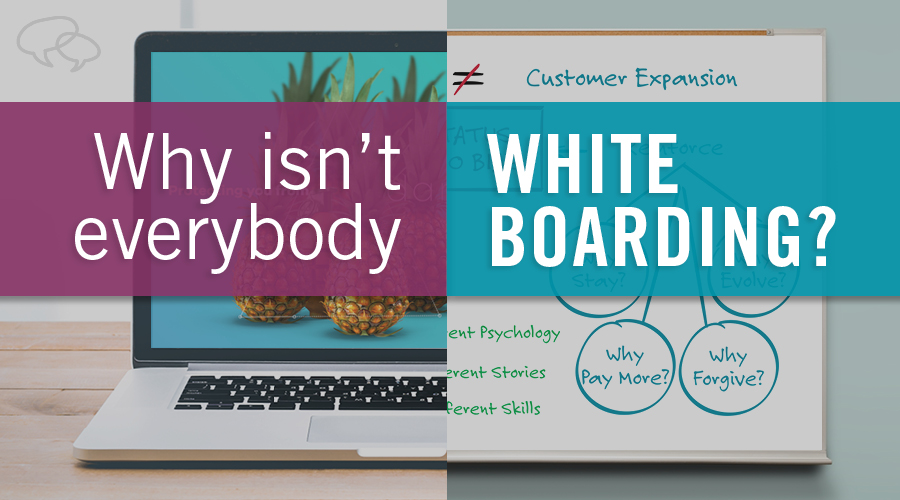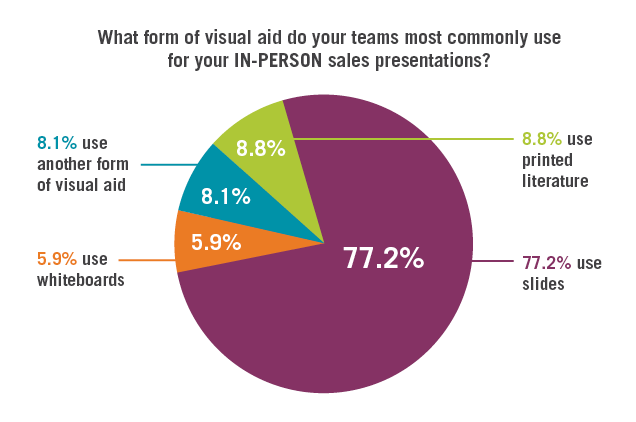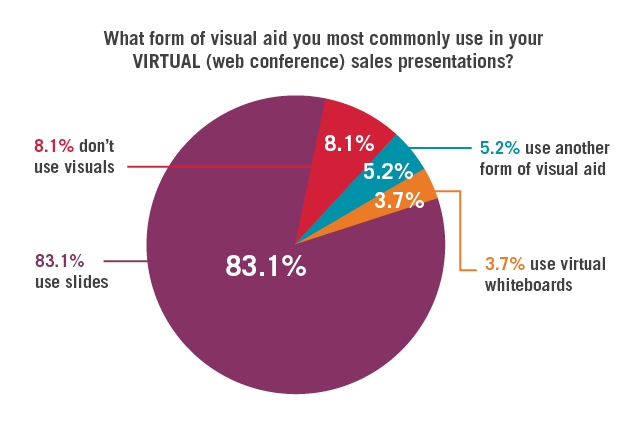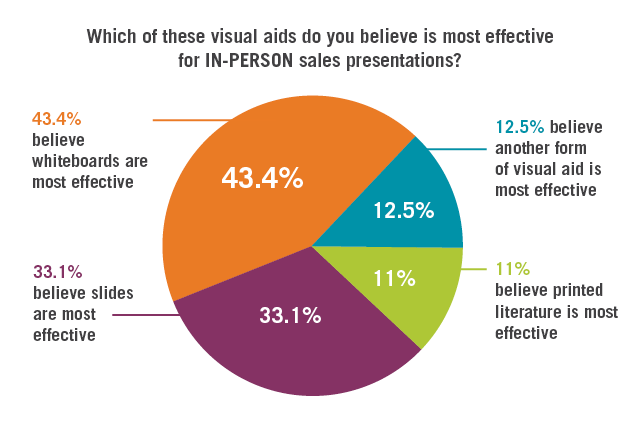
A recent survey reveals that 77 percent of salespeople use PowerPoint for their in-person presentations, while only 6 percent opt for whiteboarding. The gap between whiteboarding and PowerPoint widens in remote selling, where slides are utilized over 83 percent of the time, and the use of a digital whiteboard or any form of annotation falls to below 4 percent.
Five years ago, we did a breakthrough study with Dr. Zakary Tormala of the Stanford Graduate School of Business. The goal of the research was to compare whiteboard-style visuals to the traditional PowerPoint visuals of stock photography and bullet points. We also tested the effectiveness of more Zen-style presentations based on metaphorical imagery and a few words.
In the study, we divided over 700 participants into three groups. Each group was presented with the same story and voiceover, but the visuals used to depict the story changed.
The result? Participants who viewed the story accompanied by whiteboard visuals remembered 14 percent more than those who watched a traditional PowerPoint.
In addition, the whiteboard approach scored, on average, 10 percent higher in terms of perceived uniqueness, interest, credibility, and trustworthiness of the speaker. Remember, it was the same story and voiceover in all three cases.
Most importantly, whiteboard visuals handily defeated both types of slide presentations in actionable areas such as “willingness to share with others” and “intent to change,” based on what they saw and heard.
You’d think such dramatic results in favor of whiteboards would drive sellers to pick up the markers and put down the clickers, right? After all, aren’t sellers always looking for an edge to be different, memorable, and more convincing than their competitors?
Apparently not.
Whiteboard vs PowerPoint? Here’s What Sellers Think
As I mentioned at the beginning, in a recent industry survey conducted by Corporate Visions, only 5.9 percent of companies primarily use whiteboards during their in-person sales presentations. In contrast, 77.2 percent rely on PowerPoint. Even printed literature (8.8 percent) is used more often than whiteboards as a visual presentation aid (we’re talking old-school brochures and flyers).
Sellers’ unwavering commitment to using slide presentations becomes even more evident when you look at the web conference-based virtual selling environment we all find ourselves in today.
Despite the popularity of touch screens and annotation tools, 83.1 percent of sellers still use PowerPoint slides on remote sales calls, while whiteboard visuals plummet to less than 4 percent when sellers go online. In fact, presenters are more than twice as likely to use “no visuals” at all rather than draw whiteboard visuals.
Here’s the irony of these results:
The use of whiteboards seems paltry when you consider there is scientific evidence to prove it significantly outperforms traditional slide decks. And it’s even more amazing when these same survey respondents admit they feel that whiteboarding is a better option than PowerPoint.
You read that correctly. When asked, “Which approach do you believe is most effective,” nearly half (43.4 percent) said whiteboards—not PowerPoint.
The Choice is Yours
If you’re a seller, you can draw two conclusions from these survey results:
- Set your mind on improving your annotation and whiteboarding skills in the digital environment, and you can differentiate yourself from 96% of the other presenters out there.
- Or, at least make sure you’re doing something to make your PowerPoint presentations stand out from such a noisy, crowded environment.
Check out our Remote Selling Survival Kit to learn more science-backed techniques for developing better remote sales presentations.


